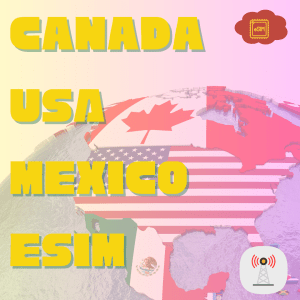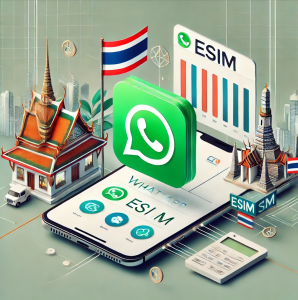Let’s take a look at your options for an eSIM in Myanmar!
Myanmar is one of the most underestimated countries in Southeast Asia, but has proven itself to be a true hidden gem for curious tourists to explore. In fact, it is reminiscent of Thailand 50 years ago: large, undeveloped regions, relatively easy travel journeys, few tourists, and high affordability. Myanmar is the perfect destination for a traveler who enjoys the experience of an untouched country.
Not only does the country have a lot to offer, but all its major local carriers support the use of an eSIM in Myanmar as well!
Traveling to Myanmar? Stay connected by purchasing an eSIM online!
eSIMs are easy to activate on your device, without the need for physically interacting with SIM cards. They also allow you to use a physical SIM at the same time – namely, your local line. Travel eSIMs are especially useful as you can acquire them digitally right before you travel, thus eliminating the need for individual SIMs or phones for your travel destination. You can also easily switch phones by registering your new device with your cellular network provider!
How do eSIMs work?
The way an eSIM works is that when you purchase one from a mobile network provider, you are sent a QR code via email, which you can scan and use to install a connection onto your phone. In other words, it is simply the virtual form of a SIM card, which you can easily install on your phone!
Why purchase an eSIM?
For starters, it is a great way to stay connected to your destination country. In this case, purchasing an eSIM in Myanmar will allow you to maintain connection to communication services while you are abroad during your travels. If you were to use roaming data, you could be charged high fees. Secondly, they are very easy to acquire and you do not need to physically interact with any mobile service provider of an eSIM in Myanmar, keeping your travels as streamlined as possible!
Local Carriers
MPT

MPT (Myanmar Posts and Telecommunications), the state owned provider, had once tarnished its reputation in the past when it charged exorbitantly high fees for mobile access, both voice and data. They led a monopoly under the military regime – a time during which they gave access out exclusively to the elite (privileged foreigners and the military power circle). Since then, they’ve lowered their prices significantly. Back in 2013, they charged $200 for a SIM card with data; and only two years later it was just $1.50.
This carrier supports the use of an eSIM in Myanmar.
Check out their local prices and coverage (in KS)

Telenor
 Telenor ended up 2nd in the race for dominance with Ooreedoo. In 2014, it launched its network in Mandalay and Yangon only. By 2015, it covered 15 provinces: Mandalay, Yangon, Sagaing, Bago, Magway, Ayeyarwaddy, Kayin, Mon, Kachin, Shan, Kayah, Nay Pyi Taw and Tanintharyi, making it the largest 3G network in the country.
Telenor ended up 2nd in the race for dominance with Ooreedoo. In 2014, it launched its network in Mandalay and Yangon only. By 2015, it covered 15 provinces: Mandalay, Yangon, Sagaing, Bago, Magway, Ayeyarwaddy, Kayin, Mon, Kachin, Shan, Kayah, Nay Pyi Taw and Tanintharyi, making it the largest 3G network in the country.
This carrier supports the use of an eSIM in Myanmar.
Check out their local prices and coverage (in KS )

Ooredoo
Ooredoo was first in the race to revolutionize the mobile phone system in Myanmar. It launched its network in August 2014 in Yangon, Naypyitaw and Mandalay. Regardless, it has fallen behind Telenor to the 3rd position, but its services are available in several other areas like the Mon state.

Ooredoo delivers a 3G network on 900 MHz, mostly. So in order to make use of their services, you need to use a device that operates on this frequency in 3G.
This carrier supports the use of an eSIM in Myanmar.
Check out their local prices and coverage (in KS)

eSIM2Fly Roaming SIM
 So how does a roaming eSIM compare with local eSIMs?
So how does a roaming eSIM compare with local eSIMs?
Local SIMs charge users about $1 per GB. The price per GB on SIM2Fly is $3.10 per GB on the first package and then $2.50 for add-on packages. This makes the eSIM2Fly roaming SIM competitive with the local eSIMs in price per GB.












